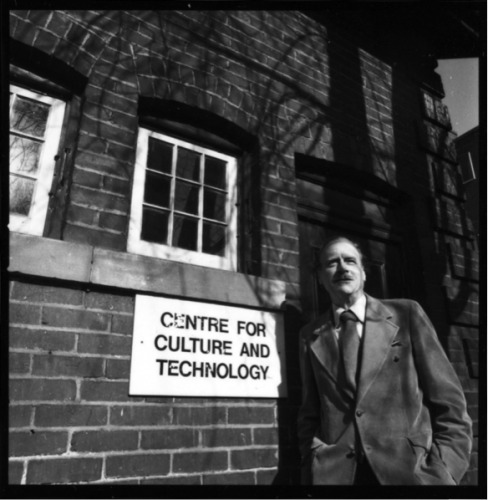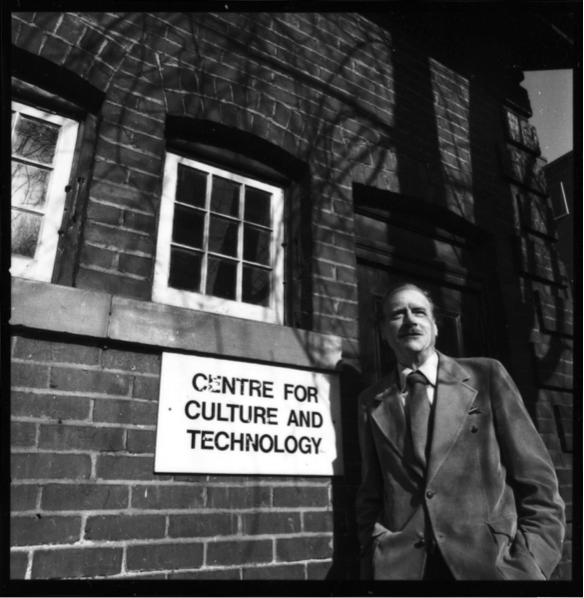DATE – 1993-1995
DISCIPLINE Education
THE BULLETIN, University of Toronto, December 13, 1993
Art for Technology’s Sake – If the medium is the message and the artist is the letter carrier in the Virtual Reality Artist Access Program.
By David Todd
Fred trundles along the carpet, trailing his electronic vocal cord. The evenings addition of electronic traffic, and open house organized regularly by the McLuhan program in culture and technology is in full swing and all eyes are corrected for work. A remote-controlled robot 20 cm in height with a small video camera mounted atop a wheelbase, Fred is navigating through a series of miniature art installations known as the Toronto cyber city as the robot explorers the Lilliputian and surroundings his TVR transmits images along the videoconferencing line to room in sunny Santa Monica.
There are artists Kit Galloway and Sherry Rabinowitz take turns stabbing at the buttons on the keypad in front of them. Thanks to the high-tech magic of the videophone link they are able to operate Fred’s controls from thousands of miles away as easily as if they were sitting in the same room. It’s an object lesson in the power of contemporary Cuban vacations technology to obliterate geographical distances and as it happens an excellent way to inspect suspect footwear fashions in distant locales. While the two Californians are clearly taken the sandbox sized artworks Rabinowitz also seems to enjoy using friends and co-adage to scrutinize some of the varieties of shoes on display at Toronto this evening. Under her direction robots gaze lingers particularly long on a splendid pair of red and blue suede platform boots.
Through it all for its creators of slim bearded figure in a free Tibet T-shirt, hovers attentively. Graham Smith the project leader for the McLuhan program’s virtual-reality artist access program VRAAP and the host of this evenings proceedings is helping his mechanical offspring through its paces bending down periodically to untangle long cord and setting the robot back on course when it plowed into the walls of an installation. At the end of the demonstration Smith introduces the artists involved holds up Fred to the videoconferencing camera so that Galloway and Rabinowitz can take a good look.
I’m working on a second robot he announces smiling like a proud father I think we’ll call it Fred.
Though he resembles no one so much as the guy behind the counter at the local comic book shop, Smith is arguably the living archetype of the artist in an age of such advanced directive dedications technologies as video conferencing and virtual reality. A mixture of a mixture of media junkie visionary cyberpunk and basement inventor he seems equally at home dropping references to the Flintstones and Star Trek were discussing the room entries of Buddhist philosophy. In his works that bears out the truth of one of n Marshall McLuhan’s central maximums namely that the media are too important to be entrusted to the care of business. Rather they belong in the hands of artists because as the celebrated communications guru once wrote they are art forms.
It is precisely this that has lead the McLuhan Program, under the directorship of Derrick de Kerckhove, to foster relationships with artists like Smith who share an interest in communications technologies. “It all goes back to McLuhan teaching me as a student that if you want to understand the impact of technologies on culture, you must never forget the importance of the artist,” de Kerckhove says. “The artist is the one who interprets culture and helps develop the new sensibility that will accompany the change brought about by technology”.


